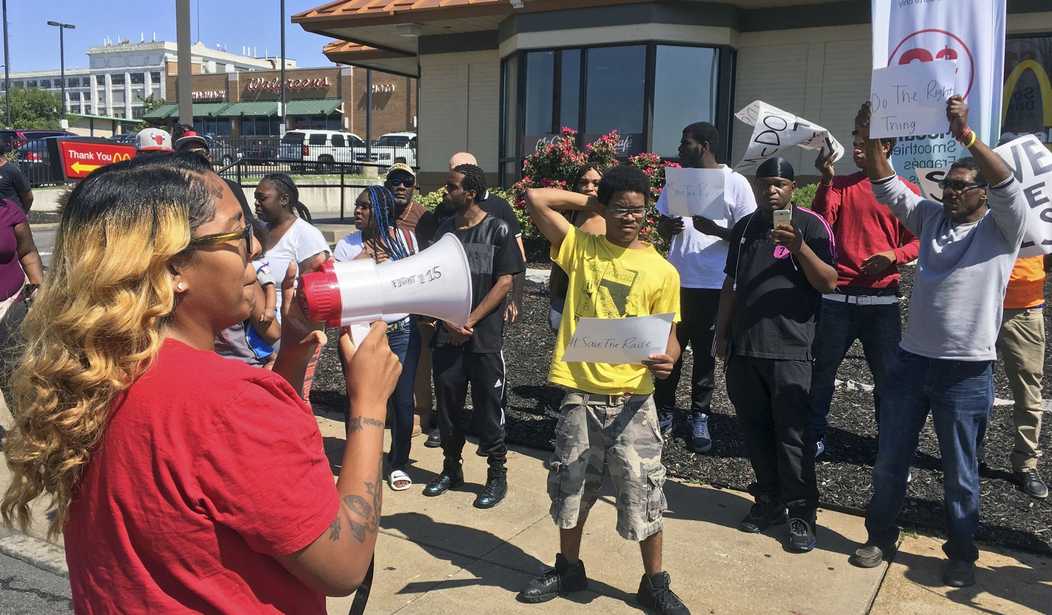A $15 minimum wage has already destroyed hundreds of small businesses and many more jobs in cities like New York and San Francisco, and – as interest grows within state and local governments – it now threatens the livelihoods of millions of workers nationwide.
New research by my colleagues and me at the American Consumer Institute examines four major labor market policies – minimum wage hikes, predictive scheduling, mandatory paid leave and joint-employer regulations – and finds these labor regulations will lead to four million fewer jobs. The study estimates that half of these job losses will result as more jurisdictions adopt higher minimum wages.
When labor costs increase, so does the cost of producing goods and providing services. In response, employers may decide to reduce work hours or cut the number of workers, causing output to decrease. Businesses also often increase prices to offset minimum wage hikes, decreasing consumer welfare and eroding families’ purchasing power.
For every job and every dollar of production lost, indirect “multiplier” effects cascade through the economy, magnifying the damage. Employers produce less and hire less, resulting in decreases in employment earnings and leaving the economy with more than one job and more than one dollar lost.
In our analysis, we calculated the economic consequences of setting the minimum wage at $15 in every state, compared to each state’s current minimum. For the 21 states that currently enforce the federal $7.25 per hour minimum wage, a jump to $15 would constitute a more than 100 percent increase. Even Alan Krueger, a prominent liberal economist and adviser to President Obama, cautioned that “a $15-an-hour national minimum wage would put us in uncharted waters, and risk undesirable and unintended consequences.”
Recommended
Our results give ample reason for caution. Cumulatively, we conclude that two million jobs would be destroyed from a $15 national minimum wage, relative to employment levels under current law. In Texas, a quarter-million jobs would vanish, while Pennsylvania, Florida, California, and Georgia would also suffer significant declines in low-wage employment. Total national economic output (GDP) would decline by $187 billion, and consumers would lose $138 billion in benefits through higher prices.
These findings are in line with hundreds of studies published over the last several decades, which consistently report that minimum wage hikes reduce employment opportunities for teens and low-skill adults. Last July, the nonpartisan Congressional Budget Office estimated that a $15 national minimum wage could jeopardize up to 3.7 million jobs.
Moreover, the three metrics of economic prosperity we examined -- consumer welfare, output, and employment -- only capture part of the minimum wage’s negative effects, which include reducing training opportunities available to employees, increasing job turnover, and encouraging employers to cut back on fringe benefits. While these unintended consequences are harder to quantify and predict, their impact on low-wage employees should not be dismissed.
In addition, it is becoming increasingly clear that minimum wages are ineffective anti-poverty tools. Most poor families have no workers in the household, and so aren’t positioned to benefit from a wage boost. And among households with a minimum wage worker, nearly 9 in 10 don’t live in poverty, since much of the low-wage labor force is composed of teenagers and young adults living in middle-income households and older second-earners supplementing a partner’s income.
So, while a $15 minimum wage would have sweeping negative effects on the U.S. economy, there is little evidence that it would do much good for those it’s meant to help. In short, American small businesses, consumers, and workers will pay the price.
In the end, the basic laws of economics can’t be negated with political rhetoric or wishful thinking. Americans deserve policymakers who look beyond the hype and carefully consider the numbers. The numbers don’t look good.
Liam Sigaud writes for the American Consumer Institute, a nonprofit educational and research organization. For more information about the Institute, visit www.TheAmericanConsumer.Org.

























Join the conversation as a VIP Member